
Deliveries of India’s first Electric Motorcycle Commence In Pune
- Dec 2, 2019
- Views : 4922

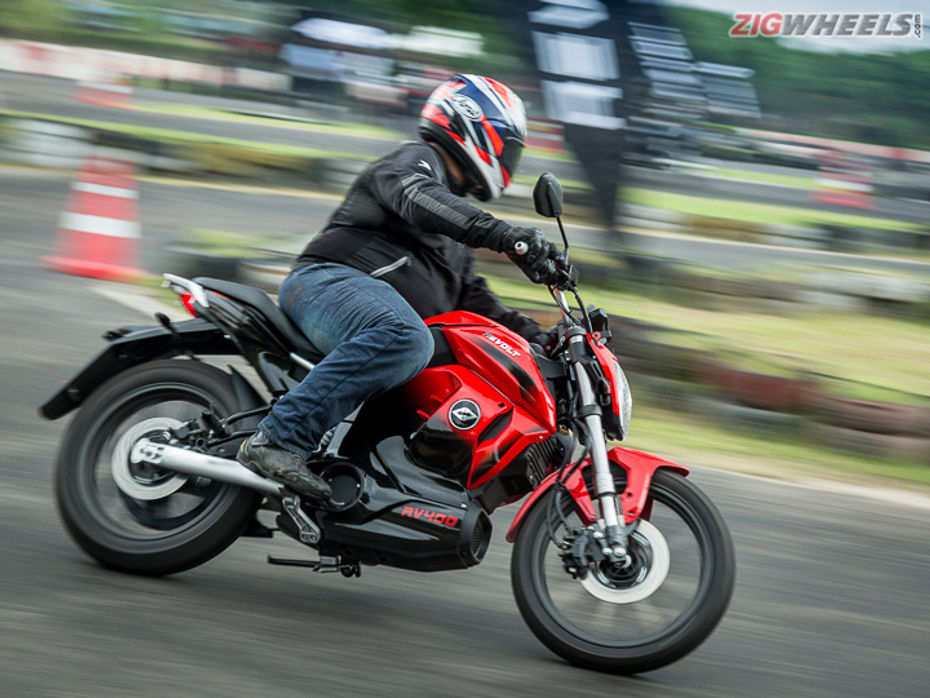
We’ve seen plenty of electric scooters in India till now, so we do have a fair idea of what to expect from them. But the Revolt RV400 is a first of its kind - India’s first electric motorcycle. And we got a chance to sample it before the launch. Naturally, we have a tonne of questions that need to be answered. The only thing is, we haven’t ridden the RV400 in the real world, just on a go-kart track. So is that enough for us to fully understand what the RV400 is all about? And more importantly, is the RV400 doing enough to convince people to switch from internal combustion to electric?
Also Read: Revolt Launches RV400 and RV300
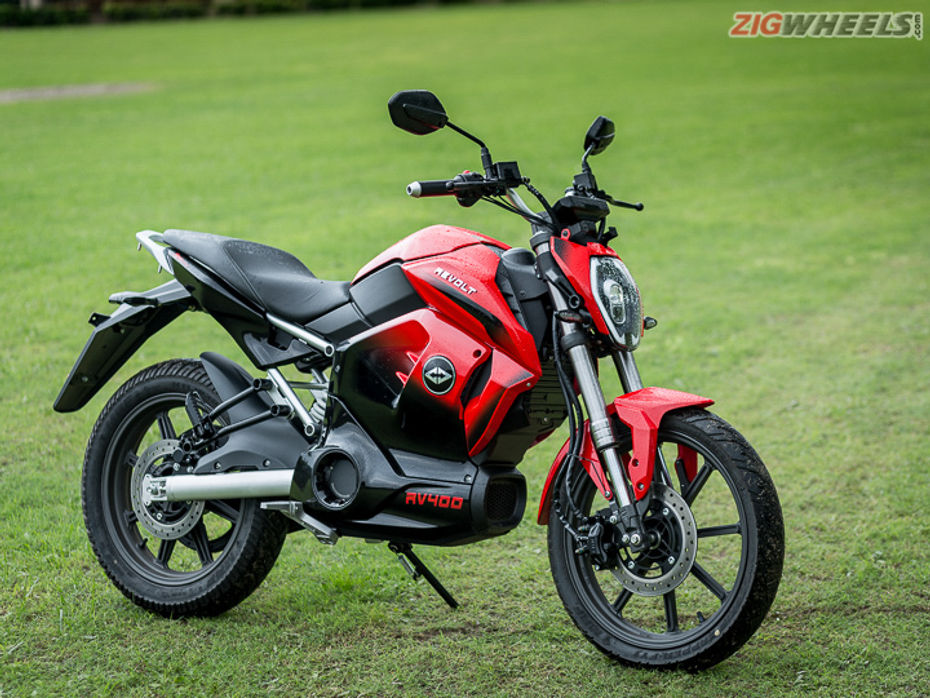
Does it feel like a bike should?
First things first, we want to know just how familiar the RV400 would feel for someone switching from a regular petrol-powered motorcycle. Hop on to the RV400 and it’s shocking just how conventional it all feels. Size-wise, the bike does remind you of a 110cc motorcycle, and with a kerb weight of 108kg, the bike feels quite light on its feet. Revolt says that the seat height on this bike is 814mm but because the bike is very slim, it actually feels a lot lower than that. So even if you’re really short, say 5’2” or 5’3”, you’ll be able to get your feet on the ground comfortably. And the single-piece seat is decently spacious too.

Now the overall ergos are identical to any other normal motorcycle. The handlebars are on the narrower side but they are positioned a little low. So you end up leaning a bit towards them. The footpegs in the default position are a bit rear-set, and that means the posture feels somewhat like that of a sporty 150cc or 160cc motorcycle. But if you want a more commuter-ish riding posture, at least for your lower body, you can interchange the left and right pegs for a more forward-set position.
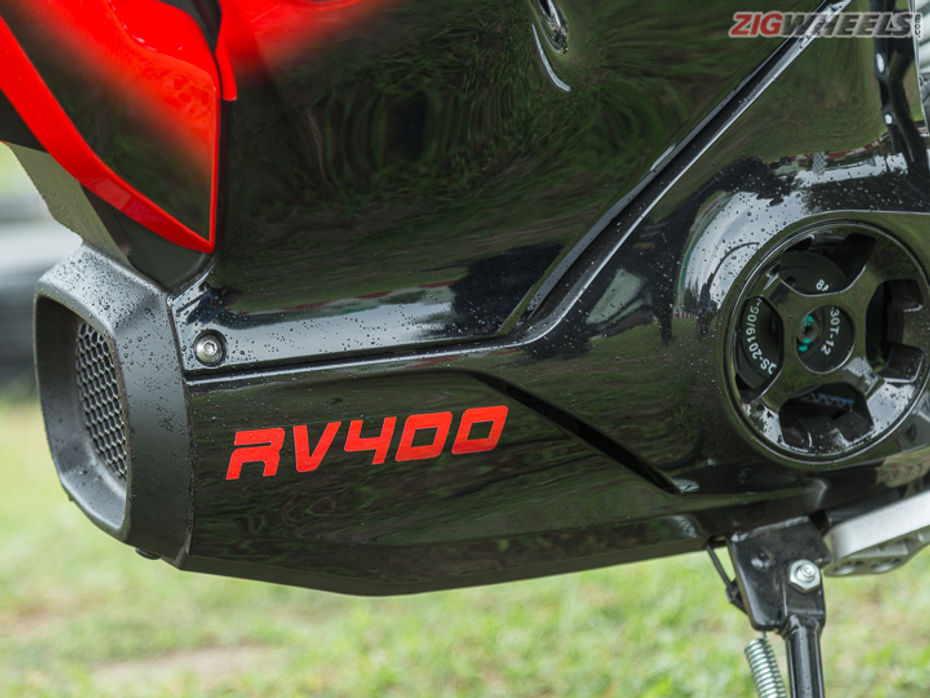
What’s the performance like?
The RV400 is powered by an electric motor with a continuous power output of 3.0kW, connected to the rear wheel using a belt drive. That doesn’t sound like much but Revolt says that this motor is capable of putting out a whopping 54Nm of torque. Of course that’s regulated by the ECU, so you don’t get all of it in one shot. There are three riding modes which can be toggled from the handlebar itself, and those will change the throttle response and your top speeds. City mode gives you the softest throttle response and limits your top speed to 45kmph. Normal bumps up throttle response and top speed to 65kmph. And in Sport, you get the full output with a top speed that’s limited to 85kmph.
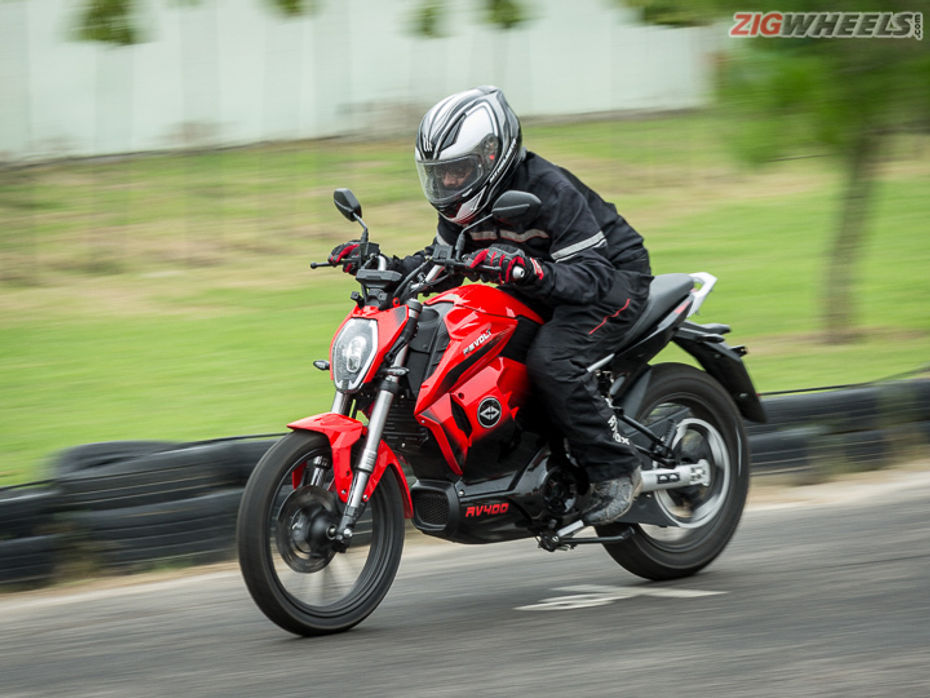
In Sport mode, down the short straight of the go-kart track, we saw 68-69kmph, which might not sound like much but given how short this track was, is actually not bad. We think the RV400’s performance is more on par with 125cc petrol-powered bikes in terms of acceleration and overall feel from the electric motor.
However, there was one issue in Sport mode: the throttle response was a little too jerky, especially in the first 10-15 degrees of throttle travel. Compounding this issue was the fact the motor gets killed as soon as you go on the brakes. So that made some of the tight corners around the go-kart track feel a bit tricky, because we couldn’t mitigate the jumpy throttle by keeping it slightly open and adding a bit of braking. But under most normal riding conditions, especially in the urban environment, if you keep the bike in City or Normal mode, the throttle is fairly easy to modulate.

What’s the range?
With a 72V, 3.24kWh lithium-ion battery pack, the RV400 has an ARAI-certified range of 154km on a single charge. Of course, since ARAI testing is done at a steady 45kmph, out in the real world with stop and go traffic, you won’t nearly get as much. And the range will change according to the selected riding mode. Revolt claims about 160km in City mode, 110km in Normal and 85km in Sport on a full charge.
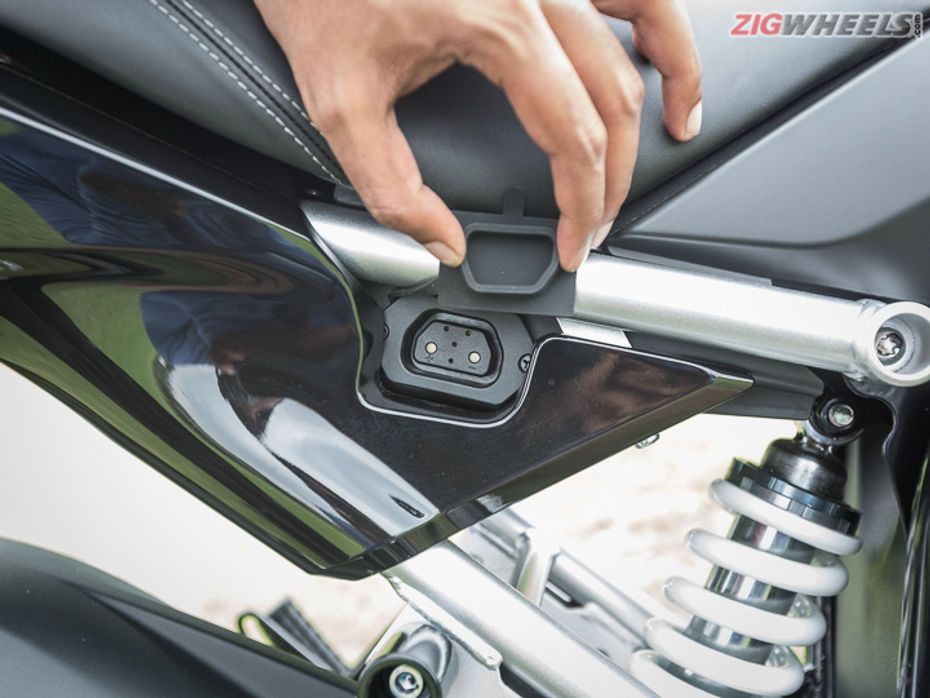
That shouldn’t be an issue for a lot of users as Revolt claims that using a conventional 15-amp power outlet, you can recharge the battery to 75 per cent in just 3 hours, while a full charge takes 4.5 hours. Of course, things will likely get easier when they implement their battery swap stations. And the battery swapping process is fairly straightforward, albeit a bit fidgety. The only real concern is that the battery weighs almost 20kg. So lifting it is no joke. And this might prove challenging if you want to carry the battery up to your home for charging indoors.

What about the fun stuff?
When it comes to handling, the first thing you notice is just how light this motorcycle feels. It’s got a fairly tight wheelbase of 1350mm, so it tips into corners very easily and at the same time, it never really feels unnerving. Even though the MRF Zapper tyres (90/80-17 front and 120/80-17 rear) are not radials, they do a pretty good job in giving you fair amounts of grip. On the go-kart track, the RV400 was quite a bit of fun to toss around the tight corners. The overall experience could be likened to riding a peppy scooter since it was so eager to change direction and there was no shifting gears or modulating the clutch involved. So while the RV400 might not be our choice on winding hill roads, it should prove to be very capable in darting through tight traffic.
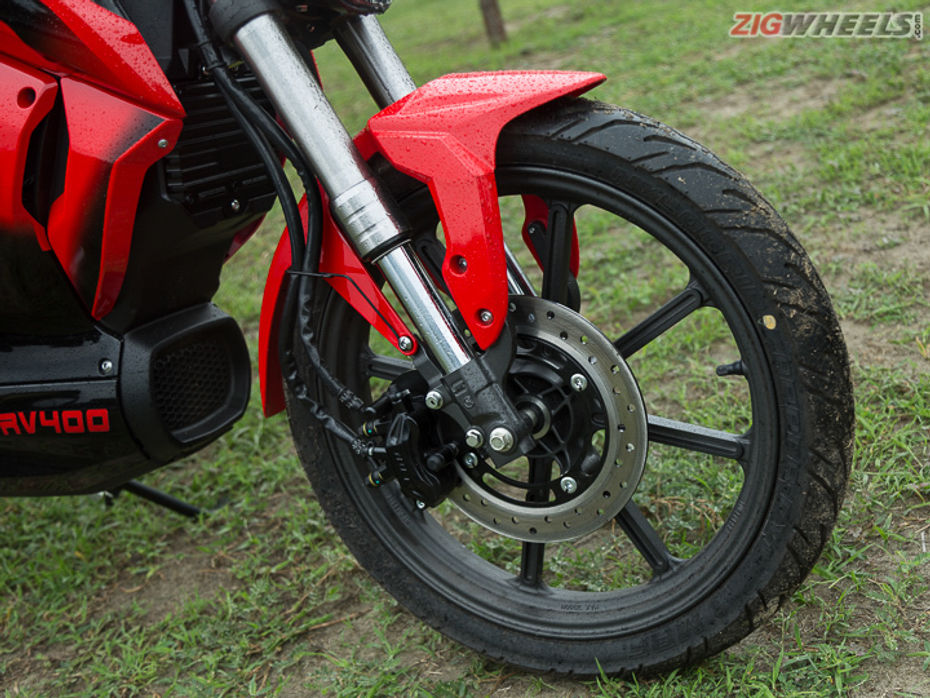
The brakes aren’t too bad either. It’s got 240mm disc brakes at both ends and the bite is pretty adequate. The only thing I have to complain about is that the levers do require a lot of pressure and that does rob them a little bit of feel. When it comes to safety, you do get combined brakes so when you apply the rear brake, it works on the front as well. Now the bike also comes with a regenerative braking system, or RBS as they call it, which will basically recharge the batteries once you go off the throttle, adding to the braking effect. But it doesn’t feel very strong on this RV400, so when you do roll off, the bike almost feels like it’s freewheeling.
Does it ride well?
The RV400 packs an inverted fork at the front and a preload-adjustable monoshock at the rear. Now a go-kart track is hardly the place to test out ride quality. But Revolt humoured us with a small speed breaker on the track. If you hit it at speed, the bike did bounce a little bit because it is set up a little on the stiffer side. But approach it with a little bit of caution and the RV400 handled it quite well. In fact, certain corners on the track were a little bumpy and they never hindered the riding experience, even when the bike was leaned over. And with a 220mm ground clearance, which is as much as that on a Hero XPulse 200, it should be able to clear any obstacles our roads can throw at it.
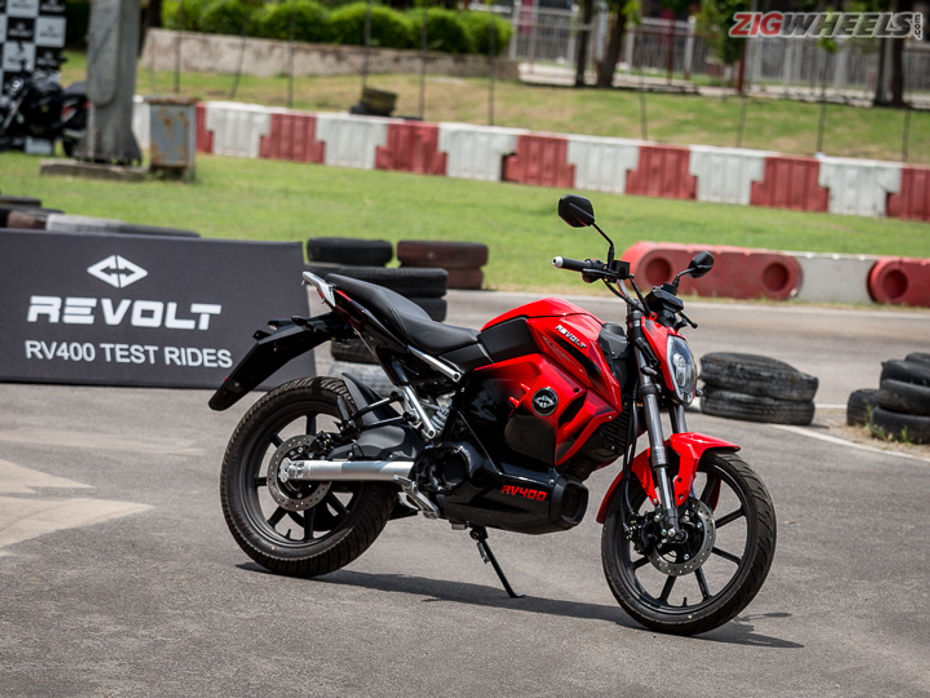
What about design, features and other things?
For a bike that performs like a 125cc motorcycle, the RV400 is packing a whole lot of features - upside-down forks, a preload-adjustable monoshock, an LED headlight with a projector for the high beam, as well as a fully digital instrument cluster. There’s a lot of software here too, thanks to the built-in 4G SIM card and a connected app which will let you do everything from start or stop the bike, find nearest swap (or 'Revolt Switch') stations, order a battery online, geo-fence the bike and even play a simulated engine note through the built-in speaker. That last bit is more gimmicky than practical, though. For a complete run-down of all the connected features, check out this story.
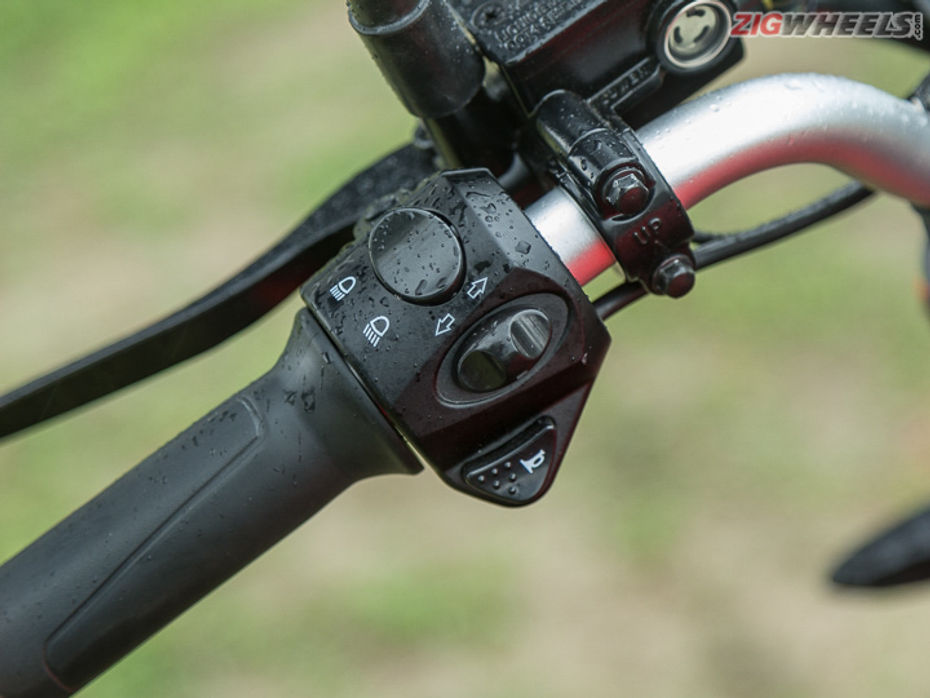
Quality was a concern for a lot of people when they first saw the motorcycle, and on that front, the RV400 does feel pretty alright. There are some odd panel gaps here and there but the actual quality of the plastics and other components is fairly up to the mark, and it’s not very different from a normal 125cc motorcycle. The other concern was that the Revolt RV400 looks like a rebadged Chinese motorcycle - namely an amalgamation of the Super Soco TS and TC Max. And we are not going to argue that it’s not. The headlight, instrument cluster, belly panels and suspension look like they came from the TS, while the swingarm and belt drive resemble those from the TC Max. But Revolt did say that although the bike’s single-cradle frame comes from Soco, their frame partner, it has been beefed up for Indian conditions. And the company also assured us that at this point, 70 percent of the bike has been localised and by the end of the year, 100 percent of it will be.
To top things off, Revolt says they will offer a 7.5 year/ 1,50,000km warranty on the battery. What's more is that the battery switching process is free until 31st December, 2019. Combine all this with the fact that the RV400 is a fairly capable and handsome motorcycle, do its origins really matter?
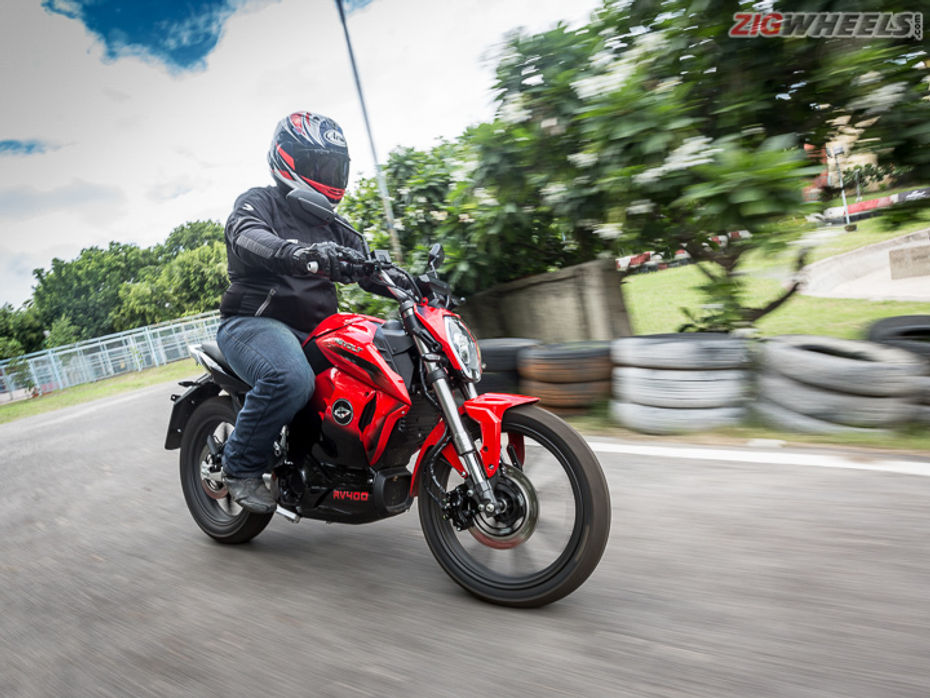
Verdict
The most remarkable part about this Revolt RV400 is just how unremarkable it feels. Don’t get me wrong, this isn’t any form of criticism. But the fact of the matter is that the mental adjustment required to move from a petrol-powered motorcycle to this electric one is hardly there. So while it’s not the best bike for long distances on the highway or even some fun weekend riding, for a lot of urban commuters, it’s enough reason to go green. And that’s not for some environmental reasons. But because this is a simple, easy to use, no-nonsense motorcycle that will be a lot more economical to run than any petrol-powered bike.
So what about price? Well, this is the most interesting part. You can buy the RV400 at MRP - that’s ‘My Revolt Plan’. Basically that means you pay Rs 3,499 for the base version and Rs 3,999 for the premium version for 37 months. But unlike a loan or a lease, the bike is registered on your name from day one - it’s your bike. And Revolt also takes care of insurance as well as servicing costs for those three years - which for this electric bike basically involves three brake pad and brake fluid changes, and one change of tyres. There are no other moving parts that will undergo wear and tear in any case. To know more about how this incredible pricing scheme works in detail, check out this story.
So while this pricing plan doesn’t make this bike cheap, it certainly makes it affordable. And while the Revolt RV400 might not be too revolutionary in terms of technology, in terms of the purchasing experience, it just changes the game!
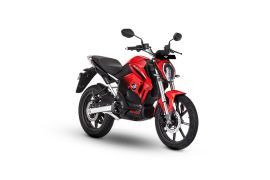

Deliveries of India’s first Electric Motorcycle Commence In Pune

Pune Is About To Get Charged Up With Revolt Motorcycles

Revolt RV400: Same Price, Other Options

You Can’t Buy A Revolt Bike This Year If You Haven’t Already

Oben Rorr First Ride Review: Fast, Fun And…

Oben Rorr First Ride Review: Fast, Fun & Flawed
 Ola Roadster
Ola Roadster
 Oben Rorr
Oben Rorr
 One Electric Motorcycles Kridn
One Electric Motorcycles Kridn
 Revolt RV400 BRZ
Revolt RV400 BRZ
India's largest automotive community
 Mahindra BE 6
Rs. 18.90 Lakh
Mahindra BE 6
Rs. 18.90 Lakh
 Hyundai Creta Electric
Rs. 17.99 Lakh
Hyundai Creta Electric
Rs. 17.99 Lakh
 Mahindra XEV 9e
Rs. 21.90 Lakh
Mahindra XEV 9e
Rs. 21.90 Lakh
 MG Windsor EV
Rs. 13.99 Lakh
MG Windsor EV
Rs. 13.99 Lakh
 Tata Curvv EV
Rs. 17.49 Lakh
Tata Curvv EV
Rs. 17.49 Lakh